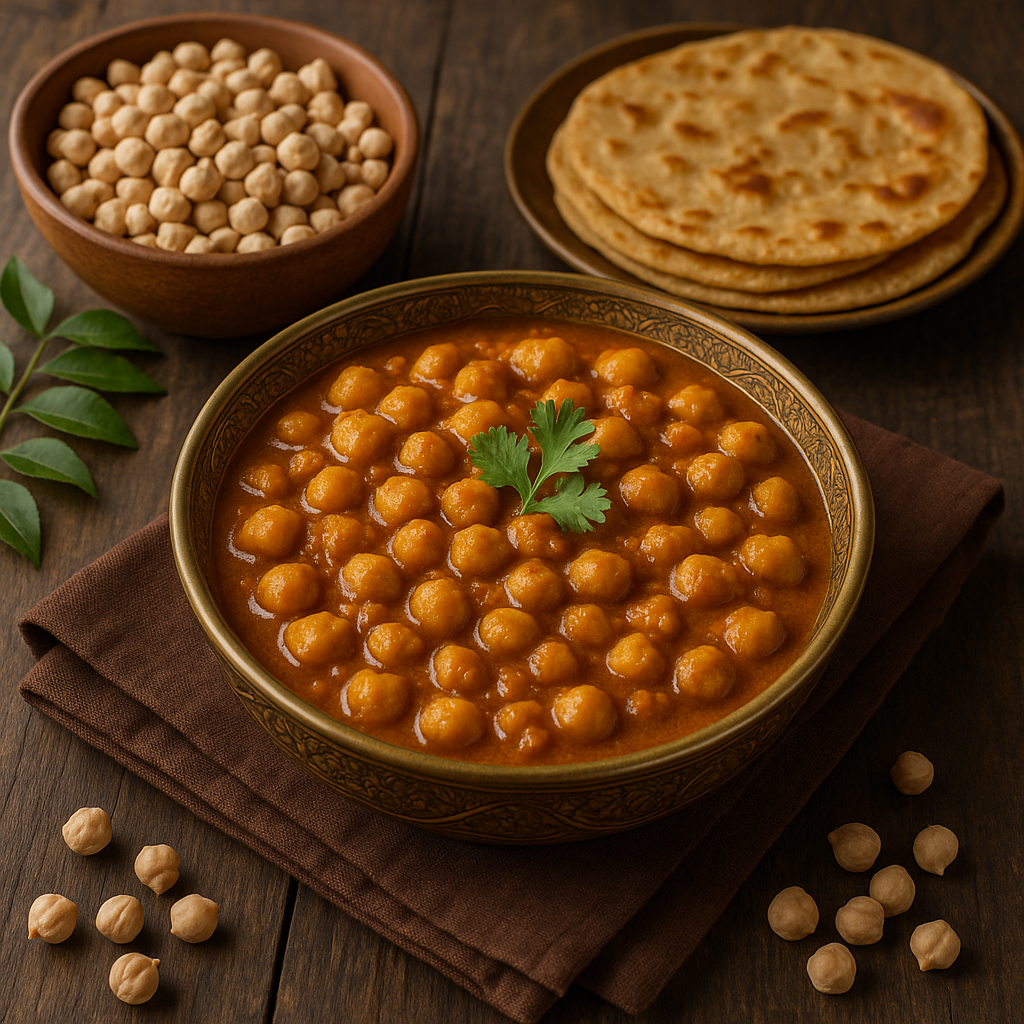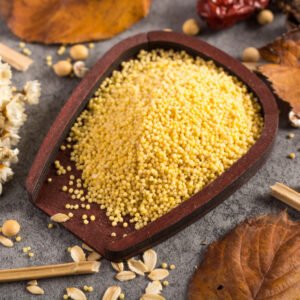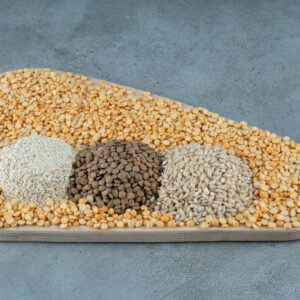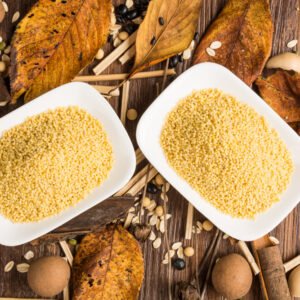When you step into a traditional Kannada kitchen, the rich aroma of spices mingling with simmering legumes tells a story that spans generations. Among the treasured ingredients that form the backbone of Karnataka’s culinary heritage, Kabuli Chana stands out as a nutritional powerhouse that has seamlessly woven itself into the fabric of Kannada cuisine. This cream-colored chickpea, larger and smoother than its desi counterpart, brings not only exceptional flavor but also remarkable health benefits to countless regional dishes.
The significance of Kabuli Chana in South Indian cooking extends far beyond its protein content. In Karnataka’s diverse culinary landscape, from the coastal regions of Mangalore to the plateau districts of Bangalore and Mysore, this versatile legume has earned its place as both a staple ingredient and a gourmet component in festival preparations.
The Cultural Heritage of Kabuli Chana in Karnataka
Kannada cuisine has always celebrated the art of transforming simple ingredients into extraordinary meals, and kabuli chana in Kannada exemplifies this philosophy perfectly. Historical records suggest that chickpeas were introduced to Karnataka through ancient trade routes, quickly becoming integral to local cooking traditions.
In traditional Karnataka households, Kabuli Chana preparation often begins before dawn, with home cooks soaking the chickpeas overnight to ensure perfect texture and optimal nutrition absorption. This time-honored practice reflects the deep understanding our ancestors had about maximizing the benefits of Kabuli Chana through proper preparation methods.
The legume’s adaptability has allowed it to flourish across Karnataka’s diverse micro-climates, from the Western Ghats to the Deccan Plateau. Local farmers have cultivated varieties specifically suited to regional soil conditions, ensuring consistent quality and flavor profiles that define authentic Kannada dishes.
Traditional Kannada Dishes Featuring Kabuli Chana
Bele Kaalu Gojju
This tangy and spicy curry represents the essence of Karnataka’s flavor palette. Kabuli Chana is slow-cooked with tamarind, jaggery, and a special blend of roasted spices including coriander, cumin, and red chilies. The dish achieves perfect balance between sweet, sour, and spicy notes, making it a favorite during festival seasons.
Kadale Kaalu Usli
A dry preparation where boiled Kabuli Chana is tempered with mustard seeds, curry leaves, and grated coconut. This protein-rich side dish complements rice perfectly and showcases how simple preparations can highlight the natural nutty flavor of quality chickpeas.
Chana Masala Karnataka Style
Unlike its North Indian counterpart, Kannada-style Chana Masala incorporates coconut, curry leaves, and a unique spice blend called bisi bele bath powder. The result is a richer, more complex flavor profile that represents the region’s distinctive culinary identity.
Kadale Kaalu Sundal
A popular temple offering and festival snack, this preparation combines boiled Kabuli Chana with fresh coconut, green chilies, and lime juice. The dish exemplifies how Karnataka cooks maximize nutritional value while creating satisfying, flavorful meals.
Nutritional Powerhouse: Benefits of Kabuli Chana
The benefits of Kabuli Chana extend far beyond its culinary applications, making it a cornerstone of healthy Karnataka cuisine. Each 100-gram serving delivers approximately 19 grams of high-quality protein, making it an excellent plant-based protein source for vegetarian households.
Protein and Amino Acid Profile
Kabuli Chana provides all essential amino acids required for optimal human health. This complete protein profile makes it particularly valuable in Kannada vegetarian cuisine, where it often serves as the primary protein source in meals.
Fiber Content and Digestive Health
With nearly 17 grams of dietary fiber per 100-gram serving, Kabuli Chana supports healthy digestion and helps maintain stable blood sugar levels. Traditional Kannada cooking methods, including overnight soaking and slow cooking, enhance fiber accessibility and digestive benefits.
Mineral Density
The legume provides significant amounts of folate, iron, phosphorus, and manganese. These minerals support various bodily functions, from red blood cell formation to bone health, making Kabuli Chana particularly beneficial for growing children and pregnant women.
Antioxidant Properties
Research indicates that chickpeas contain powerful antioxidants, including flavonoids and polyphenols, which help combat oxidative stress and support overall wellness. The traditional practice of combining Kabuli Chana with turmeric and other spices in Kannada cooking may enhance these protective properties.
Modern Applications and Fusion Preparations
Contemporary Karnataka chefs and home cooks continue innovating with Kabuli Chana, creating fusion dishes that honor traditional flavors while appealing to modern palates. Popular innovations include Kabuli Chana pasta with curry leaf pesto, chickpea flour pancakes with coconut chutney, and protein-rich smoothie bowls featuring roasted chickpea flour.
These modern applications demonstrate the ingredient’s versatility while maintaining its nutritional integrity. Young families in urban Karnataka increasingly appreciate how Kabuli Chana can be transformed into quick, healthy meals that satisfy both nutritional requirements and busy lifestyles.
Sourcing Quality Kabuli Chana for Authentic Flavors
The foundation of exceptional Kannada dishes lies in selecting premium-quality ingredients. When sourcing Kabuli Chana, factors like size uniformity, color consistency, and absence of broken pieces indicate superior quality that will enhance both flavor and nutritional value.
Quality agricultural suppliers play a crucial role in maintaining the integrity of traditional ingredients. Companies specializing in premium pulses and grains ensure that home cooks and restaurants have access to consistently excellent Kabuli Chana that meets the exacting standards of traditional Kannada cuisine.
Professional kitchens and discerning home cooks often establish relationships with trusted suppliers who understand the specific requirements of regional cooking styles. This attention to ingredient quality directly translates to superior flavor profiles and optimal nutritional benefits in finished dishes.
Preparation Techniques for Maximum Benefits
Traditional Kannada cooking methods maximize both flavor and nutritional value from Kabuli Chana. The overnight soaking process softens the chickpeas while beginning the germination process, which increases vitamin content and improves protein digestibility.
Proper Soaking Methods
Soak Kabuli Chana in clean, room-temperature water for 8-12 hours. The water should cover the chickpeas by at least 2 inches, as they will expand significantly. This process reduces cooking time and improves texture consistency.
Optimal Cooking Techniques
After soaking, pressure cooking for 15-20 minutes with a pinch of salt and turmeric ensures perfectly tender chickpeas. The addition of turmeric not only enhances color but also provides anti-inflammatory benefits that complement the benefits of Kabuli Chana.
Spice Integration
The timing of spice addition significantly impacts flavor development. In traditional Kannada cuisine, whole spices are typically tempered in oil first, followed by ground spices, and finally the cooked Kabuli Chana. This layered approach creates complex flavor profiles that define authentic regional dishes.
Storage and Preservation Methods
Proper storage ensures that Kabuli Chana maintains its nutritional value and cooking quality over extended periods. Uncooked chickpeas should be stored in airtight containers in cool, dry places, protected from moisture and pests.
Traditional Karnataka households often store large quantities of pulses in metal containers with tight-fitting lids, sometimes adding bay leaves or dried chilies as natural pest deterrents. This practice maintains quality while ensuring year-round availability of essential ingredients.
Cooked Kabuli Chana can be refrigerated for up to four days or frozen for several months, making it convenient for meal planning and preparation. Many families prepare large batches on weekends, portioning them for quick weekday meals.
Economic and Environmental Impact
The cultivation and consumption of Kabuli Chana supports both local agricultural economies and environmental sustainability. As a nitrogen-fixing legume, chickpeas improve soil health while requiring fewer synthetic fertilizers compared to other protein sources.
Karnataka’s agricultural sector benefits significantly from chickpea cultivation, providing livelihoods for thousands of farming families. The crop’s drought tolerance makes it particularly suitable for the state’s diverse climatic conditions, supporting food security while maintaining ecological balance.
Consumer choices regarding pulse purchases directly impact farming communities. Supporting quality suppliers who maintain fair trade practices ensures that the benefits of Kabuli Chana extend beyond nutrition to encompass social and economic well-being.
Conclusion
The remarkable journey of Kabuli Chana through Karnataka’s culinary landscape demonstrates how traditional ingredients continue evolving while maintaining their essential character. From ancient festival preparations to contemporary fusion creations, this versatile legume consistently delivers exceptional nutrition and authentic flavors that define Kannada cuisine.
The benefits of Kabuli Chana extend far beyond individual meals, encompassing community traditions, agricultural sustainability, and nutritional security for growing populations. As we continue appreciating traditional ingredients through modern perspectives, Kabuli Chana stands as a testament to the wisdom embedded in regional cooking practices.
Whether you’re exploring traditional recipes or creating innovative preparations, the key to maximizing Kabuli Chana’s potential lies in understanding its characteristics, respecting traditional preparation methods, and sourcing quality ingredients from trusted suppliers. For premium agricultural products that honor traditional standards while meeting contemporary requirements, consider connecting with established suppliers who understand the importance of quality in authentic cuisine preparation.
Ready to explore the authentic flavors of Karnataka cuisine with premium-quality Kabuli Chana? Discover how quality agricultural products can transform your culinary experiences and support your family’s nutritional goals.
Frequently Asked Questions
Q1: What makes Kabuli Chana different from regular chickpeas in Kannada cooking?
Kabuli Chana has a larger size, creamier texture, and milder flavor compared to desi chickpeas, making it ideal for Karnataka’s distinctive curry preparations and coconut-based dishes.
Q2: How long should I soak Kabuli Chana before cooking traditional Kannada dishes?
Soak Kabuli Chana for 8-12 hours in clean water covering the chickpeas by 2 inches. This ensures optimal texture and reduces cooking time significantly.
Q3: What are the primary health benefits of including Kabuli Chana in daily meals?
Kabuli Chana provides complete protein, high fiber content, essential minerals like folate and iron, plus antioxidants that support overall health and digestive wellness.
Q4: Can I use canned Kabuli Chana for authentic Kannada cuisine preparations?
While fresh-cooked chickpeas provide better texture and flavor control, quality canned varieties can work for quick preparations, though traditional soaking and cooking methods yield superior results.
Q5: Which traditional Kannada spices pair best with Kabuli Chana dishes?
Essential spices include coriander, cumin, turmeric, curry leaves, mustard seeds, and regional spice blends like bisi bele bath powder for authentic Karnataka flavors.





